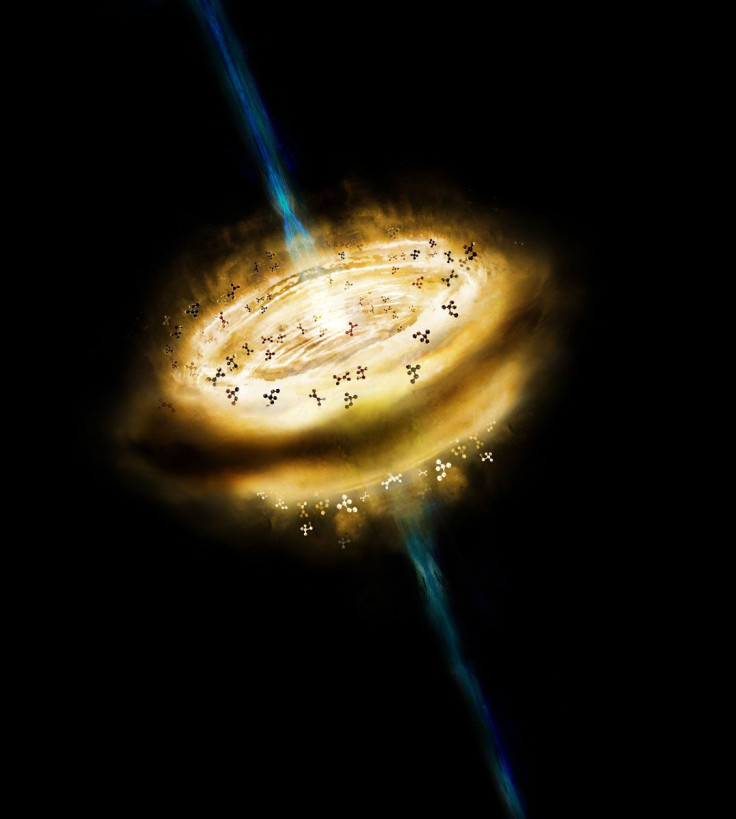Alien Life In Orion Constellation? Discovery Hints At How Life Began On Earth

Scientists could be watching alien life form in Orion — using one of the most powerful telescopes on Earth, they’ve detected the building blocks of a habitable planet swarming with life in orbit around a star forming in that constellation.
A disk of material around the protostar is shaped like a hamburger, with two bright features like a bun sandwiching a darker cloud of material, the international team reported in the Astrophysical Journal. The whole thing contains complex organic molecules in its atmosphere above and below the disk that would be needed to support life later in the system’s development. The group says it is the first time scientists have made such a discovery so early in a star’s formation and it can tell us how life began on earth.
The complex organic molecules, like methanol, are believed to lead to biomolecules like amino acids and sugars.
Read: How to Reach Planets Across the Universe? Ride a Light Beam
The disk of material around a young star, known as an accretion disk, is the material from which the star and planets form to create a solar system. This one in the Orion constellation is about 60 astronomical units deep, the study estimates, with a single one of those units being the equivalent to the distance between Earth and the sun. It could help us understand how planets are formed, specifically habitable planets.
“These molecules play a crucial role in producing the rich organic chemistry needed for life,” according to the Academia Sinica Institute of Astronomy and Astrophysics in Taiwan, which led the research. “The discovery suggests that the building blocks of life are produced in such disks at the very beginning of star formation and that they are available to be incorporated into planets that form in the disk subsequently. It could help us understand how life came to be on Earth.”
The researchers used the Atacama Large Millimeter/submillimeter Array, also known as ALMA, to find this disk with an atmosphere full of organic molecules. The observatory in Chile uses a telescope and a group of antennas to search the vast expanses of outer space, taking advantage of the high altitude and dry air in the Atacama desert to get clearer views.
It’s not the only Orion project ALMA has recently worked on. Just earlier this week, scientists announced they had used the telescope to get the most detailed ever photo of a star other than the sun. It was Betelgeuse, which makes up one of the shoulders in the constellation of the great hunter.
The protostar, Herbig-Haro 212, is about 1,300 light years away from Earth and is only about 40,000 years old. That age is about 100,000 times younger than the sun, and its mass is only about 20 percent of the sun’s.
Read: Space Telescope Finds Tons of Exoplanets, So We’re Probably Not Alone
Herbig-Haro objects are patches of material that are associated with baby stars, and that is where this protostar gets its name.
Scientists have previously found complex organic molecules necessary to support life in older stars but not one in such an early stage.
“When such molecules were first found in the protoplanetary disk around a star in a later phase of star formation, we wondered if they could have formed earlier,” lead researcher Chin-Fei Lee at ASIAA said in the institute’s statement. “These molecules are the building blocks of life, and they are already there in the disk atmosphere around the baby star in the earliest phase of star formation.”
© Copyright IBTimes 2025. All rights reserved.





















